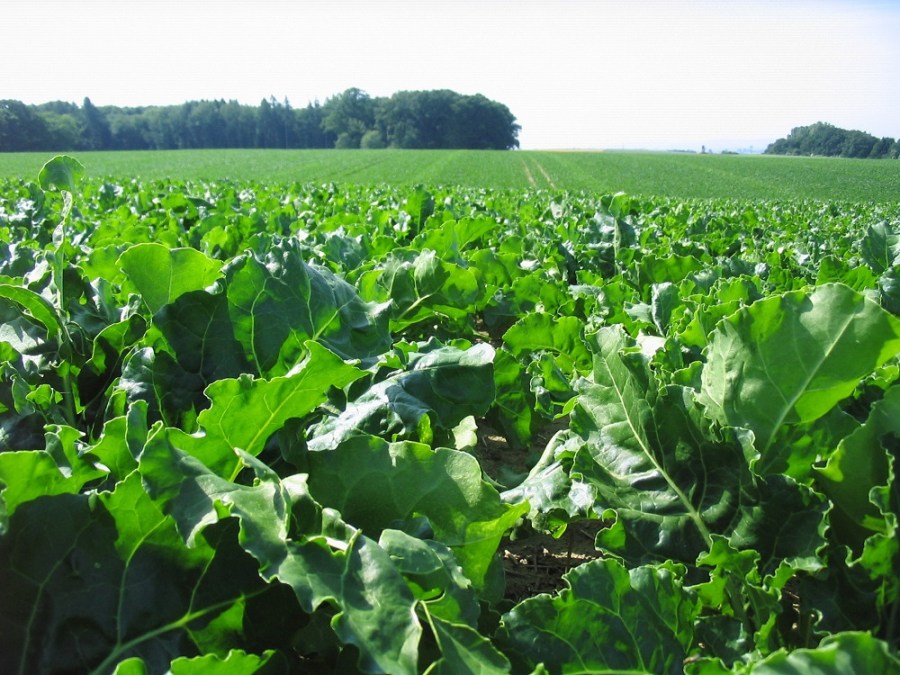There has been an exceptionally early onset of rust in this year’s sugar beet crop. CPM gets some timely advice.
A lot depends on the weather as to how this season unfolds.
By Rob Jones
According to BBRO lead scientist Dr Mark Stevens, rust (Uromyces betae) was first seen on 7 June, which is one of the earliest confirmed cases ever in the UK.
“Timing is crucial if good control is to be achieved. BBRO experience suggests that where the first application is too late then you’re fighting a rear-guard action by the time of the second application 28 days later,” he says.
When it comes to combatting rust in sugar beet, azoles have been found to be very effective. In the UK the majority of the sugar beet crop is treated with Escolta (cyproconazole+ trifloxystrobin) for this reason.
“It pays to apply fungicides at disease onset. If timings slip with either the first or second application, then it provides an opportunity for rust to develop further. If you’re a grower lifting after the end of Oct, I’d advocate a second application of fungicide.”
Rust has displaced powdery mildew as the principal disease affecting sugar beet in recent years and Mark Stevens suggests this could be due to recent weather patterns and the diligent use of fungicides decreasing the amount of inoculum that survives over the winter.
“The powdery mildew forecast model serves as a reliable indicator of pressure, but it was developed before the widespread use of fungicides. With fungicides providing such effective control of powdery mildew, this has clearly impacted on the epidemiology of the disease and reduced the number of inoculum sources being carried into the winter.
Stark reminder
“It’s an anecdotal observation only, but it serves as a stark reminder of how diseases differ. There will be many who wish the same could be said for potato late blight inoculum.”
Currently, there’s no disease forecast for rust, but recent seasons have shown how quickly the disease situation can change, says Mark Stevens.
“2015 was a bad year and the 2016 season began in a similar vein, with widespread pressure early in the summer. But hot weather in Aug and early Sept changed this and the pressure eased. This was seen clearly in BBRO trials last year when crops stayed clean heading in to the winter.
“The pressure facing crops this season however will be very different, although a lot depends on the weather as to how this season unfolds.”
A complicating factor is the degree of drought stress many sugar beet crops are under, and it’s important not to apply fungicides when the crop is showing signs of wilting, he warns.
Less than 5% of the UK crop is irrigated and when the demand for irrigation on other crops such as potatoes and carrots is also very high, sugar beet inevitably is a lower priority. However, it is estimated that on average 10% of potential beet yield is lost to drought stress in the UK.
Typically, plants with 75-100% full canopies will use between 2mm per day on dull days, to more than 6 mm per day on bright sunny days. Based on average rainfall figures for June many crops will be currently running a deficit well in excess of 60/70 mm and would clearly benefit from irrigation if available, he says.
For several years, BBRO advice has been to apply the first fungicide at full rate with a second application four weeks later at half rate. This year, if growers missed disease warnings and rust took hold early, along with other diseases potentially making an appearance, his advice is to consider applying the second fungicide at full rate.
“Rust typically comes in towards the end of July. Where crops are under pressure, there’s the option to make the second application at full rate. With roughly 20,000ha more beet in the ground than last year, it’s likely to be a longer campaign, so it may well pay to keep on top of disease to preserve canopies for early frost protection as well as to protect yield and sugar levels,” he says.





